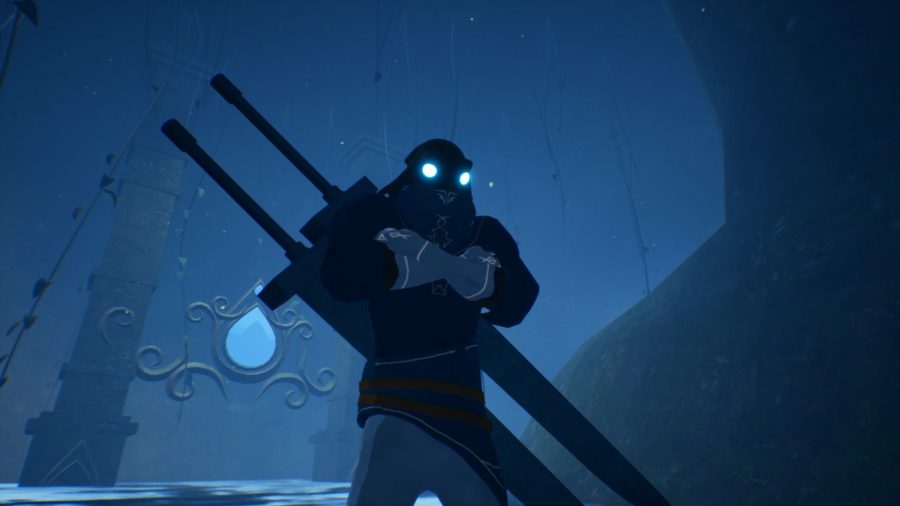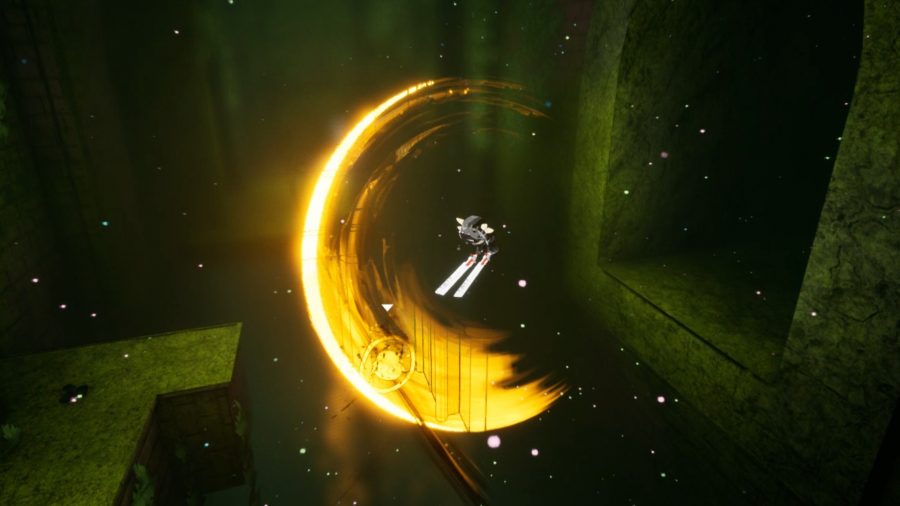There was a time not too long ago when 3D platformer fans were starved for new games. That’s no longer the case in 2020, with Spyro, Crash, and the genre at large now having made a glorious return. Many of these games hark back to the late ’90s and early 2000s when the genre was at the height of its popularity, and as such, they’re mostly colourful, kid-friendly titles that stick to what their predecessors did so well.
While this approach works as a sort of re-introduction to the genre, one has to wonder what a truly modern 3D platformer might look like. This is the question that developer Robi Studios is looking to answer with the promising Blue Fire. We spoke with the studio’s CEO, Gabriel Rosa, to discuss the team’s approach to modernising the genre and the technology powering the game’s development.
Blue Fire impressed during Nintendo’s Indie World Showcase back in March, showing off its dark world, skill-based combat, and graceful platforming. Aesthetically, it offers a compelling mix of styles, with its cutesy lead character being immediately offset by a decidedly moody colour palette and atmosphere. The idea is to strike a novel balance by combining elements of the cheerful mascot platformer and another comeback king – the tough-as-nails 2D Metroidvania.
Rosa explains that this tonal experimentation and high level of difficulty are key to Blue Fire’s identity. The team was keen to avoid putting out a grim experience, like Dark Souls, which might have scared off the core platformer audience and resulted in it being referred to as a ‘soulslike’.

“Those two things alone would have dragged us into a pool of dozens of indie games,” Rosa thinks. “I think the big reason for this is that comedy, cuteness, and fun are a huge part of the platformer DNA, so straying from those elements would make us lose the platformer essence. I believe all genres have mutations and change over time, but it’s important to recognise what the public opinion of a certain genre is at the time of embarking on a project and not straying too far from it, otherwise players won’t recognise the product as something they will like.”
Whether you’re a platformer aficionado or someone looking for a potential entry point to the genre, Blue Fire’s high-flying action is sure to impress. Its floating castle setting is packed with impossible chasms to overcome, challenging aerial stunts to master, and unforgiving enemies to topple. Basically, don’t expect to be pushing blocks around.
“We knew our movement was a key element in setting us apart from other games,” Rosa says. “As we prototyped combat, we knew we had to make use of it, otherwise it would feel like two untied experiences.” It’s plain to see in recent gameplay trailers just how well Blue Fire’s combat and platforming flow together and complement one another.
Notably, the team found world and story building to be the greatest challenges of all. “To me, making the world and the story just kind of felt like reverse archaeology,” Rosa says. “We would have these big ideas of how everything worked and it sounded great, but once we started implementing things (digging), we’d realise there were gaps in our theories”. This led to constant and creative iteration on the game’s original concept.
Unreal Engine’s strong online community and resources helped the team to overcome technical roadblocks at a good pace during this time, Rosa explains. It provides what he calls an “amazing framework ready for each new technical aspect” that rears its head.
Rosa also believes that the engine puts a great deal of power in the hands of artists, which reduces the strain on programmers and gives each artist more control over the appearance of animations, effects, shaders, and more. He adds that, while UE4 is easy for artists to learn, a supervisor or technical artist should always be brought on board to design, test, and establish “the complete art production workflow and in-game configuration of everything”.
The team made use of the engine’s profiling and localisation tools, though put aside more advanced plugins, such as destruction, various simulations, and the VFX tools.”We knew from the start that, with us being a small team, we had to focus on the game and not spend valuable hours seeing if a rock simulation was accurate enough,” Rosa says.
And that’s really the story of Blue Fire in a nutshell: smart, timely innovation from a small, passionate team. In many ways, the game is incredibly ambitious – not least because it’s being developed simultaneously for PC and several consoles – but Rovi Studios knows precisely what it wants to achieve with Blue Fire and might just shake up the 3D platformer genre in the process.
Blue Fire is expected to launch in Q1 2021. Here’s a link to its Steam page. Unreal Engine 4 is available for free. Unreal Engine 5 is due to arrive next year.
In this sponsored series, we’re looking at how game developers are taking advantage of Unreal Engine 4 to create a new generation of PC games. With thanks to Epic Games and Robi Studios.



